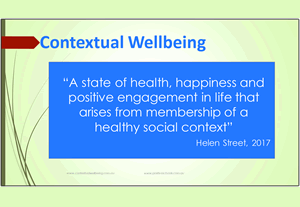 Daniel Goleman’s quote from his bestselling book, Emotional Intelligence, is so true:
Daniel Goleman’s quote from his bestselling book, Emotional Intelligence, is so true:
“Happy, calm children learn best.”
Safe classroom cultures with teachers who form positive relationships with students create the most powerful forces for exceptional learning to occur.
Positive, respectful communication is a huge part of creating such a culture and often we can forget that communication is so much more than words spoken – often the loudest messages our students receive are unspoken.
So what communication secrets do exceptional educators have that ensure classroom culture enhances learning for everyone?
Firstly they know their beliefs, perceptions and expectations shape behaviour and communication. Robert Rosenthal discovered the ‘Pygmalion effect’ in 1975 – demonstrating that when we hold strong positive expectations for all students, educational outcomes will be higher.
If we see all students as having the ability to improve, essentially they will have a chance to do that. If we perceive an illiterate student, for example, as having little chance of improving, research shows this can have an invisible negative impact.
Just because we talk does not mean we communicate. So much of our communication is subtle, non-verbal and built on cues and nuances.
Too much talking overloads many boys in particular and they can “freeze up” and be unable to work out what is required. Raised voices and shouting can have the same impact on students who live in home environments where verbal abuse is common, or on sensitive children, children with auditory processing issues or on the Autism Spectrum.
Something I always found useful in the classroom is the concept of ‘suggestopedia’, the power of suggestion.
Let’s be honest no one enjoys or appreciates being told what to do. So being asked to do things or having something “suggested” can avoid the possible sense of threat that comes from being told or demanded.
By modelling respectful, fair interactions we increase the chances of having our requests (and our classroom needs) met.
Here are some examples:
- Do you want to work in a group or by yourself?
- In a few moments we will need to pack up.
- Choose which order you want to do the questions in.
- Soon we’ll have a brain break to help reset your regulation levels.
- Can you please show me how many of you need some more time to finish this task by putting your hand up?
An unhelpful habit that is common in parenting and education is telling children and students what we don’t want, rather than what we do want.
“Don’t forget to add diagrams to your assessment … Don’t forget to use referencing as we have shown you.” Rather than “Remember to add diagrams.”
Remember what happens when someone says, “Don’t think of a blue elephant”? Non-literal words are confusing and words of negation can invisibly inhibit how our students perceive what we need them to achieve.
Consider this way of using language. Instead of saying “Clean up this rubbish”, you could say “You can clean up the rubbish around your desk now”. You can also get students to stay with you by saying something like “You may not understand what I am suggesting first up” – implying that they will understand later.
The opposite of respect, fairness or kindness is shaming and that is destructive on many levels. Examples of non-verbal shaming include:
- Deliberately ignoring a child
- Being sarcastic
- Rolling one’s eyes or glaring at a child with disgust
- Shouting, yelling or swearing at a child.
Sadly some habits persist in classrooms where the culture comes from older fear-based, power-dominant teaching styles of last century. These not only inhibit cooperation, they can cause scars that last right through adulthood.
Examples of shaming language (used often with boys especially) include:
- You are a naughty boy.
- You’re hopeless, stupid, or you’re not even trying.
- You will never amount to anything.
- I don’t know why I bother with you!
- What do you think you are doing?
Shaming language fuels mindsets that inhibit learning and can create a reluctance to attend school, let alone participate. It creates social exclusion instead of connectedness and safety, and this means the primitive centre of the brain will have to remain in flight-fight mode.
In the first month with a new class, I would spend time building thinking skills, communication skills and connections between students.
Without doing these activities, I found that students stayed in their negative perceptions from the past about each other and their unique cultural prejudices. With them, by the end of first term, it was safe to have circle times, feedback opportunities and very honest teachable moments which were insightful and often inspirational.
It may take time to build trust and connectedness, which is needed to created that safe supportive culture in your classroom, but the benefits are enormous and worth investing in.


